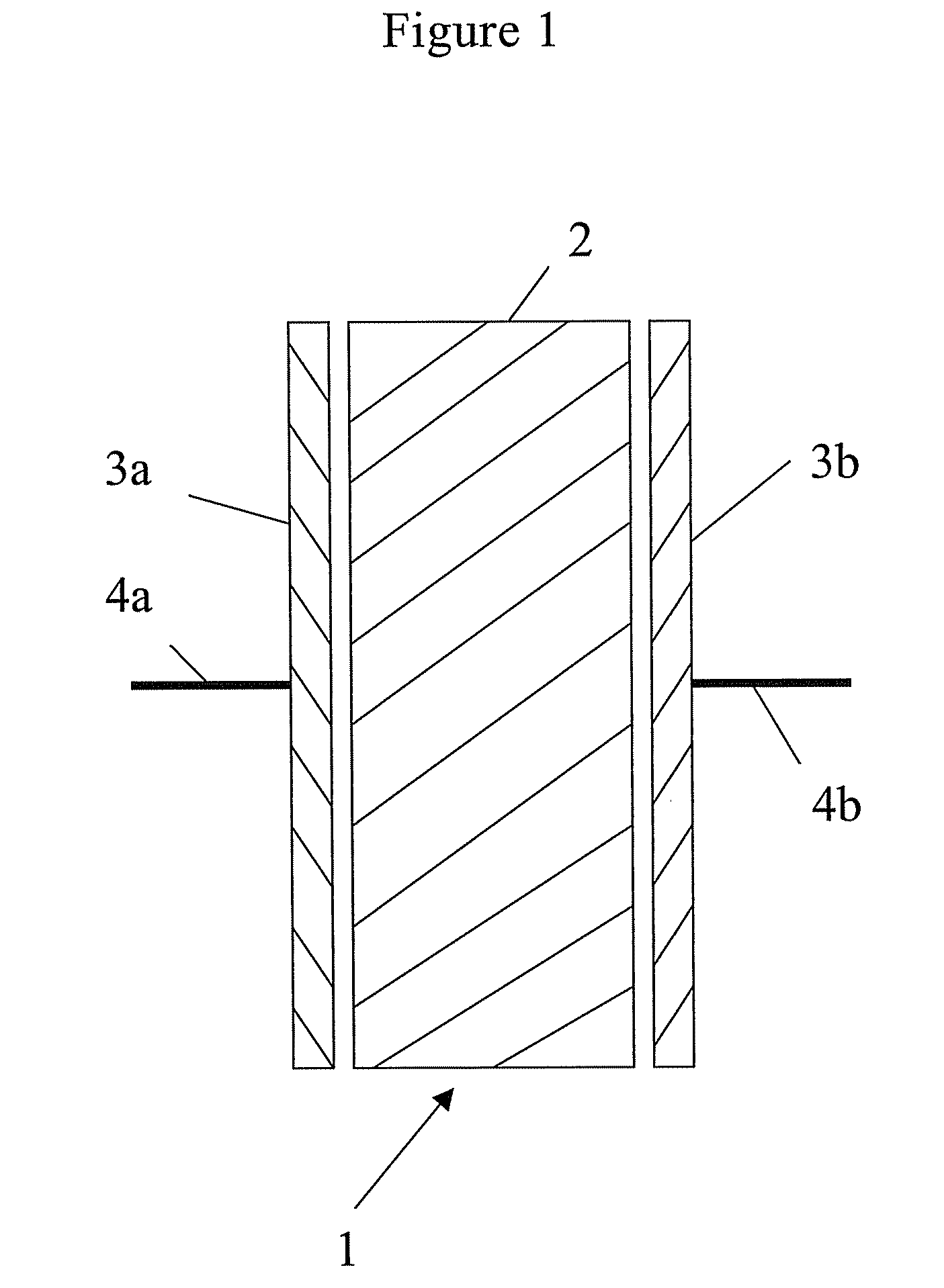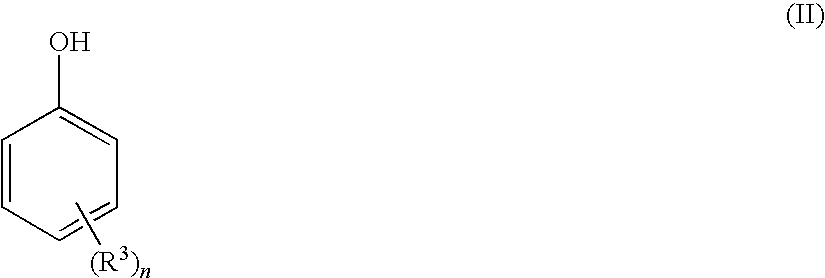Conductive polymer
- Summary
- Abstract
- Description
- Claims
- Application Information
AI Technical Summary
Benefits of technology
Problems solved by technology
Method used
Image
Examples
example 1
[0070]This is an example of an electrically conductive acid cured solvented resole polymer according to the invention.
[0071]The following starting materials were used:
Resin: solvented phenolic resole IDP139100 gp-Toluene sulphonic acid 40 g
The resin used was solvented phenolic resole IDP139 which was supplied by Borden Chemical Uk Ltd and kept in storage at room temperature for 5 years. It is a non aqueous resole resin in a solvent which is a mixture of dibasic esters including dimethyl glutamate, dimethyl succinate and dimethyl adipate. The p-toluene sulphonic acid was supplied by Degussa. It is a 65% by weight aqueous solution. Water was removed from solvented phenolic resole IDP139 by distillation such that the residual water content was about 2% by weight.
[0072]The solvented phenolic resole and acid were mixed and allowed to cure at room temperature over 7 days in an open polythene mould.
[0073]The cured polymer was a hard casting with a glossy exposed air surface and a matt surf...
example 9
[0081]Example of an electrically conductive acid cured solvented phenolic resole polymer used as a coating is described. A ketone, acetone, was added to the solvented resole as follows:
Resin: solvented phenolic resole 20 g (obtained from Dynea)
Acetone 20 g
[0082]To this ketone / ester solvented resole, p-Toluene sulphonic acid 10 g was added and the solution mixed with a laboratory bench high speed stirrer. The solution was poured over a flat plastic mould and allowed to cure at room temperature. As the acetone evaporated a conductive coating was formed. After 24 hours, a reading of 1.2 kΩ was measured on the surface of the coating.
example 10
[0083]Example of an electrically conductive acid cured solvented phenolic resole polymer used as a coating on a glass tissue filter is described. A ketone, acetone, was added to the solvented resole as follows:
Resin: solvented phenolic resole 12 g (obtained from Dynea)
Acetone 48 g
[0084]To this ketone / ester solvented resole, p-Toluene sulphonic acid 12g was added and the solution mixed with a laboratory bench high speed stirrer. Into the solution a strip of 22 gm−2 glass tissue was dipped and then cure in an oven at 65° C. for 1 minute. After 24 hours, a reading of 4.4 kΩ was measured on the surface of the glass filter.
PUM
| Property | Measurement | Unit |
|---|---|---|
| Fraction | aaaaa | aaaaa |
| Percent by mass | aaaaa | aaaaa |
| Percent by mass | aaaaa | aaaaa |
Abstract
Description
Claims
Application Information
 Login to View More
Login to View More - R&D
- Intellectual Property
- Life Sciences
- Materials
- Tech Scout
- Unparalleled Data Quality
- Higher Quality Content
- 60% Fewer Hallucinations
Browse by: Latest US Patents, China's latest patents, Technical Efficacy Thesaurus, Application Domain, Technology Topic, Popular Technical Reports.
© 2025 PatSnap. All rights reserved.Legal|Privacy policy|Modern Slavery Act Transparency Statement|Sitemap|About US| Contact US: help@patsnap.com



